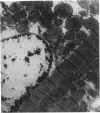Abstract
Reperfusing hearts after an ischemic episode can result in cellular Ca2+ overload. This is accompanied by the formation of contraction bands, loss of sarcolemmal integrity, and mitochondrial disruption. The present study investigated the effect of uncoupling oxidative phosphorylation with 2,4-dinitrophenol (DNP) during reperfusion after 30 or 60 minutes of ischemia on this reperfusion-induced Ca2+ gain. After 60 minutes' ischemia, reperfusion with 1 mM DNP delayed the accumulation of Ca2+ and increased the duration of reperfusion before sarcolemmal disruptions were evident. This suggested that once sarcolemmal integrity is lost, Ca2+ will freely enter the cells irrespective of whether the mitochondria are able to accumulate Ca2+. After 30 minutes ischemia, reperfusion for up to 30 minutes with 0.1 or 1 mM DNP attenuated the Ca2+ gain and maintained sarcolemmal integrity. Because the authors previously found that maintaining sarcolemmal integrity alone does not totally abolish Ca2+ gain, it is suggested that DNP must prevent the entry of Ca2+ that occurs via route(s) other than those created by the loss of sarcolemmal integrity.
Full text
PDF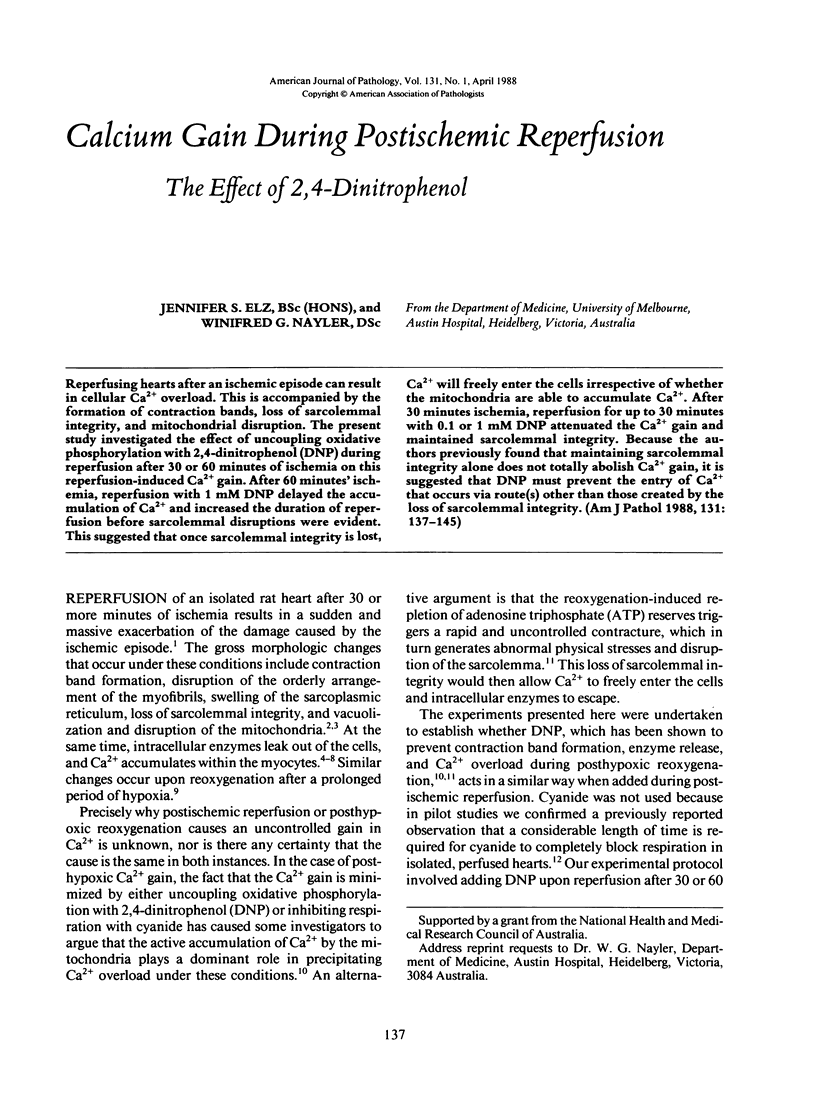
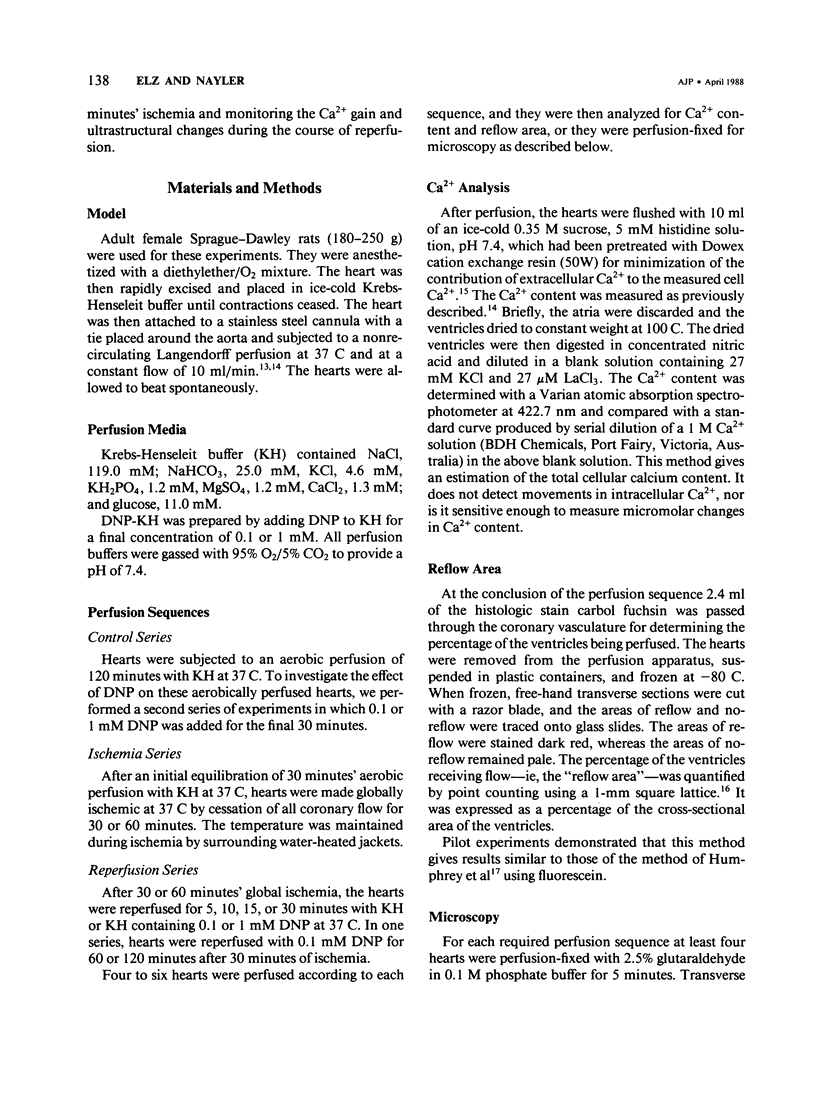
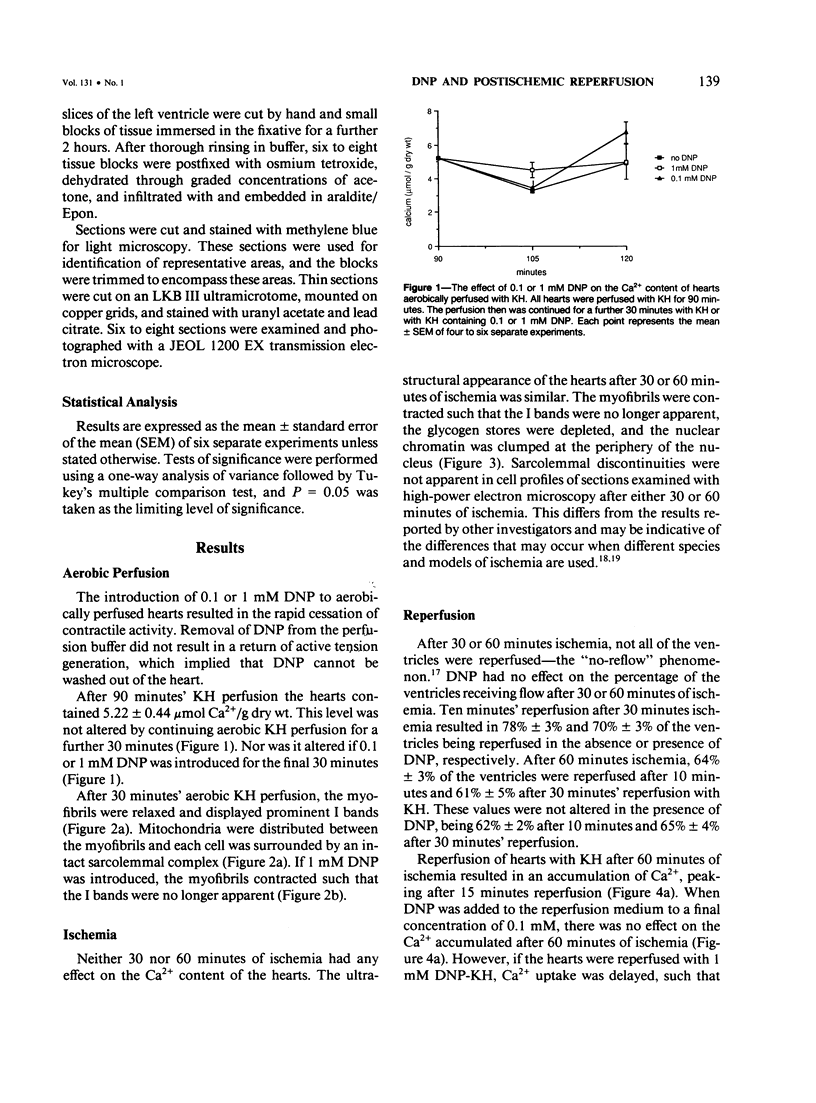
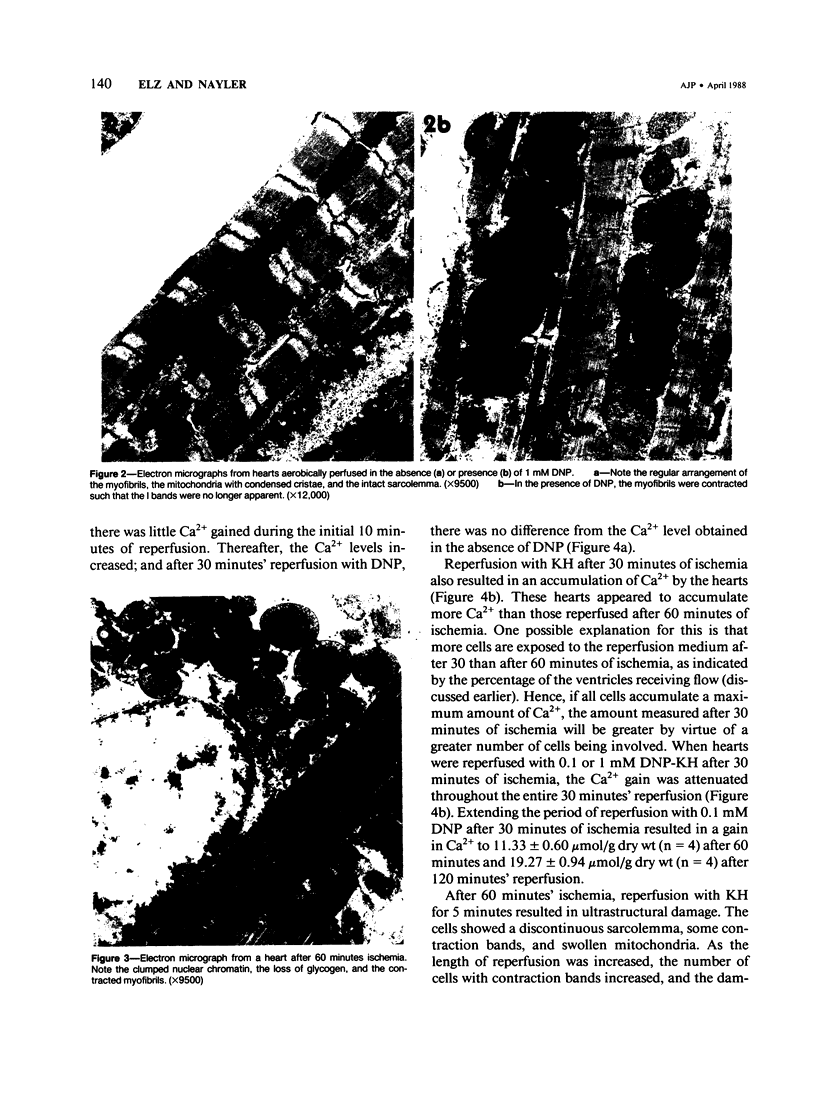
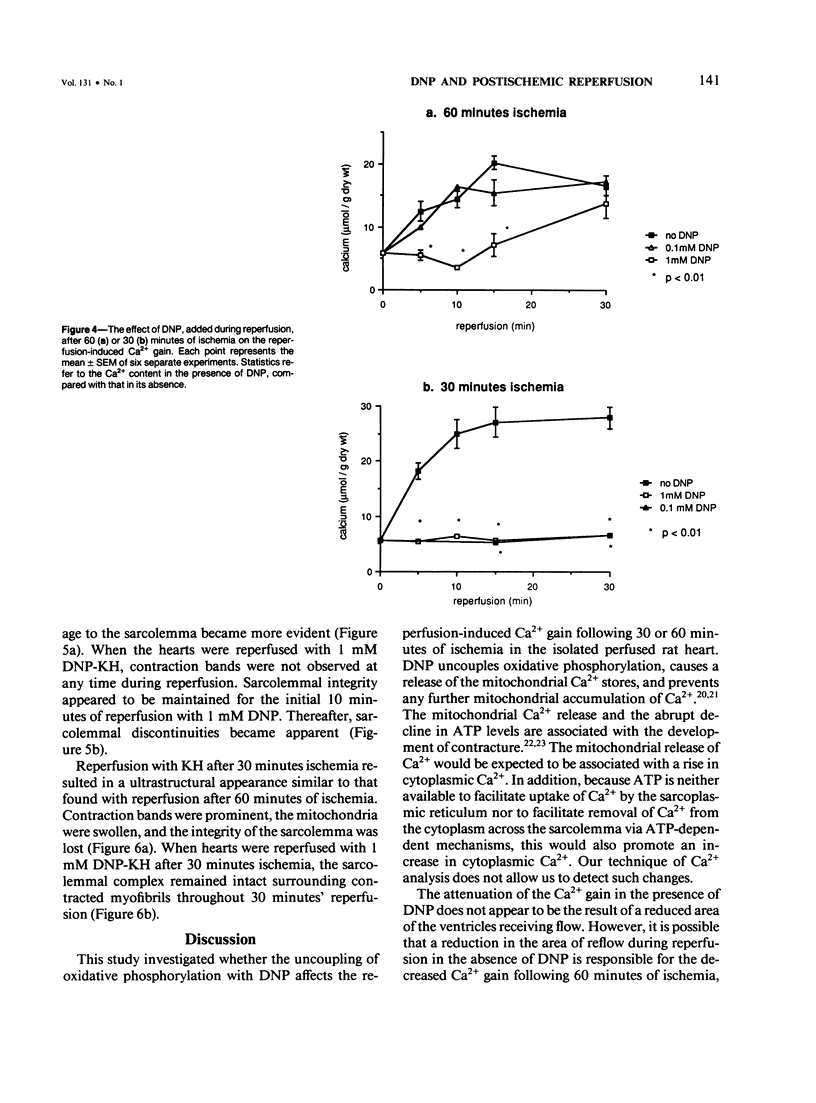
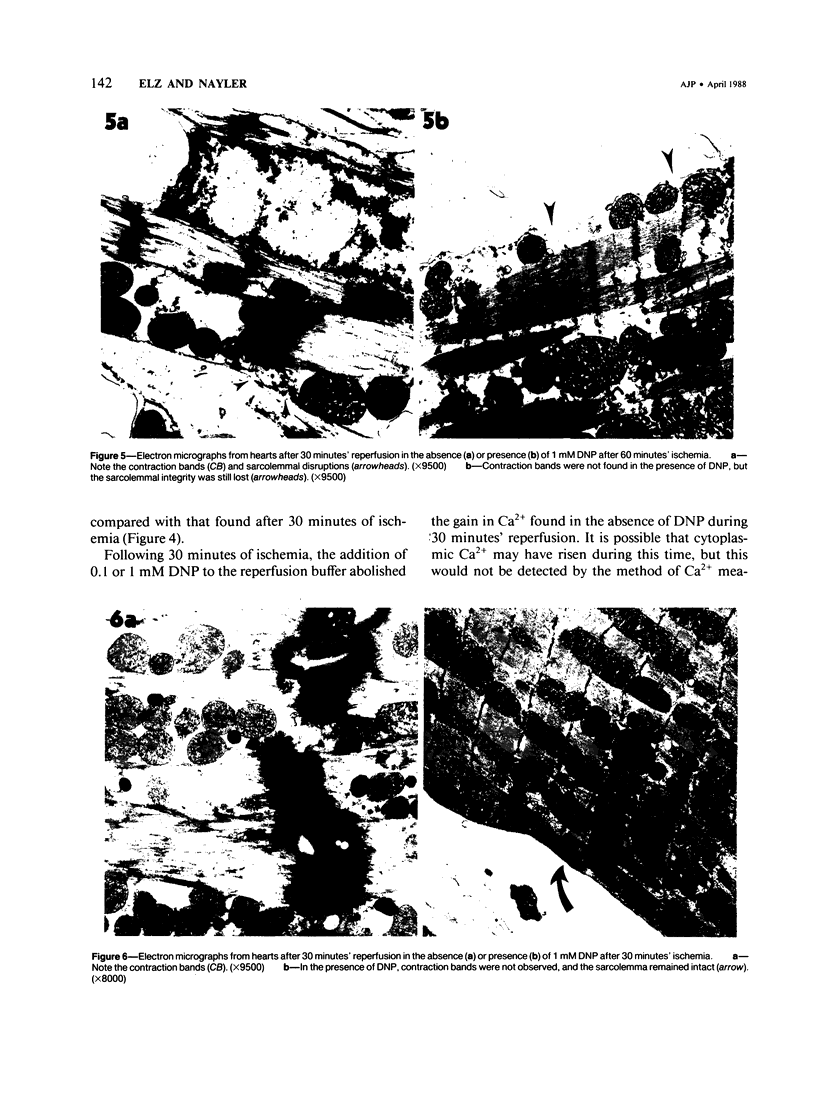
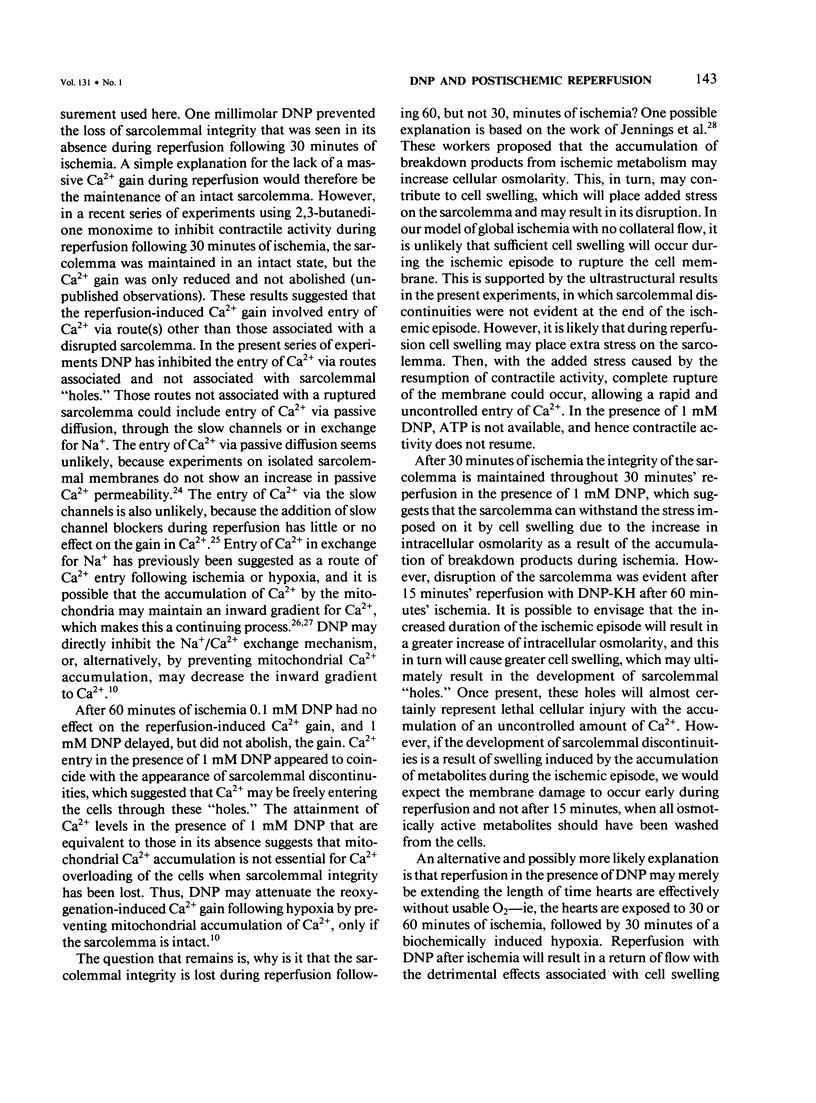
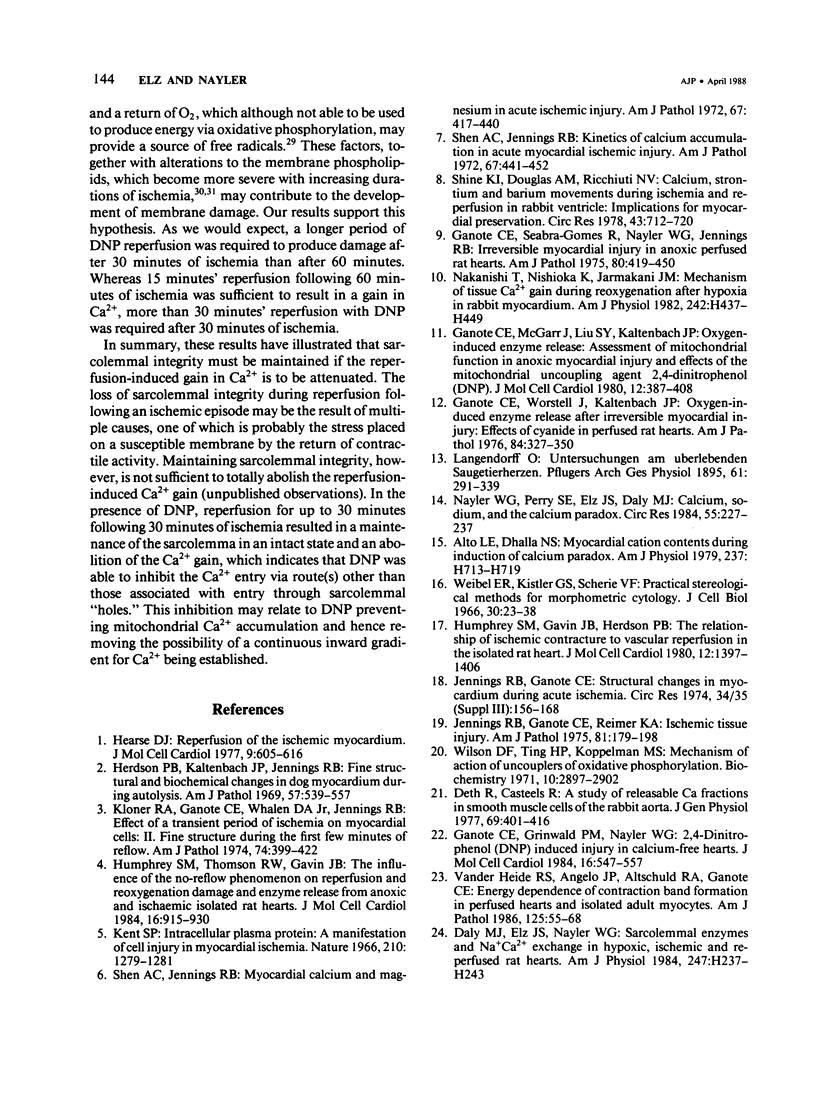
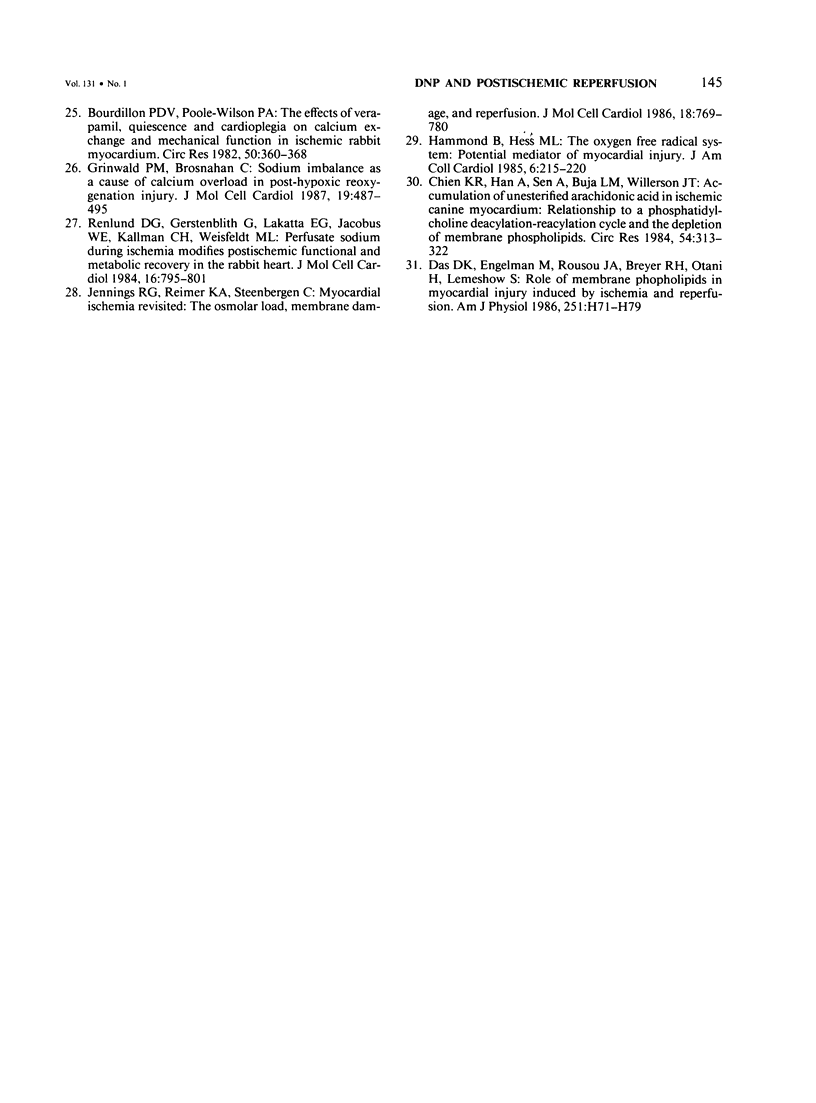
Images in this article
Selected References
These references are in PubMed. This may not be the complete list of references from this article.
- Alto L. E., Dhalla N. S. Myocardial cation contents during induction of calcium paradox. Am J Physiol. 1979 Dec;237(6):H713–H719. doi: 10.1152/ajpheart.1979.237.6.H713. [DOI] [PubMed] [Google Scholar]
- Bourdillon P. D., Poole-Wilson P. A. The effects of verapamil, quiescence, and cardioplegia on calcium exchange and mechanical function in ischemic rabbit myocardium. Circ Res. 1982 Mar;50(3):360–368. doi: 10.1161/01.res.50.3.360. [DOI] [PubMed] [Google Scholar]
- Chien K. R., Han A., Sen A., Buja L. M., Willerson J. T. Accumulation of unesterified arachidonic acid in ischemic canine myocardium. Relationship to a phosphatidylcholine deacylation-reacylation cycle and the depletion of membrane phospholipids. Circ Res. 1984 Mar;54(3):313–322. doi: 10.1161/01.res.54.3.313. [DOI] [PubMed] [Google Scholar]
- Daly M. J., Elz J. S., Nayler W. G. Sarcolemmal enzymes and Na+ -Ca2+ exchange in hypoxic, ischemic, and reperfused rat hearts. Am J Physiol. 1984 Aug;247(2 Pt 2):H237–H243. doi: 10.1152/ajpheart.1984.247.2.H237. [DOI] [PubMed] [Google Scholar]
- Deth R., Casteels R. A study of releasable Ca fractions in smooth muscle cells of the rabbit aorta. J Gen Physiol. 1977 Apr;69(4):401–416. doi: 10.1085/jgp.69.4.401. [DOI] [PMC free article] [PubMed] [Google Scholar]
- Ganote C. E., Grinwald P. M., Nayler W. G. 2,4-Dinitrophenol (DNP)-induced injury in calcium-free hearts. J Mol Cell Cardiol. 1984 Jun;16(6):547–557. doi: 10.1016/s0022-2828(84)80641-0. [DOI] [PubMed] [Google Scholar]
- Ganote C. E., McGarr J., Liu S. Y., Kaltenbach J. P. Oxygen-induced enzyme release. Assessment of mitochondrial function in anoxic myocardial injury and effects of the mitochondrial uncoupling agent 2,4-dinitrophenol (DNP). J Mol Cell Cardiol. 1980 Apr;12(4):387–408. doi: 10.1016/0022-2828(80)90049-8. [DOI] [PubMed] [Google Scholar]
- Ganote C. E., Seabra-Gomes R., Nayler W. G., Jennings R. B. Irreversible myocardial injury in anoxic perfused rat hearts. Am J Pathol. 1975 Sep;80(3):419–450. [PMC free article] [PubMed] [Google Scholar]
- Ganote C. E., Worstell J., Kaltenbach J. P. Oxygen-induced enzyme release after irreversible myocardial injury. Effects of cyanide in perfused rat hearts. Am J Pathol. 1976 Aug;84(2):327–350. [PMC free article] [PubMed] [Google Scholar]
- Grinwald P. M., Brosnahan C. Sodium imbalance as a cause of calcium overload in post-hypoxic reoxygenation injury. J Mol Cell Cardiol. 1987 May;19(5):487–495. doi: 10.1016/s0022-2828(87)80400-5. [DOI] [PubMed] [Google Scholar]
- Hammond B., Hess M. L. The oxygen free radical system: potential mediator of myocardial injury. J Am Coll Cardiol. 1985 Jul;6(1):215–220. doi: 10.1016/s0735-1097(85)80278-3. [DOI] [PubMed] [Google Scholar]
- Hearse D. J. Reperfusion of the ischemic myocardium. J Mol Cell Cardiol. 1977 Aug;9(8):605–616. doi: 10.1016/s0022-2828(77)80357-x. [DOI] [PubMed] [Google Scholar]
- Herdson P. B., Kaltenbach J. P., Jennings R. B. Fine structural and biochemical changes in dog myocardium during autolysis. Am J Pathol. 1969 Dec;57(3):539–557. [PMC free article] [PubMed] [Google Scholar]
- Humphrey S. M., Gavin J. B., Herdson P. B. The relationship of ischemic contracture of vascular reperfusion in the isolated rat heart. J Mol Cell Cardiol. 1980 Dec;12(12):1397–1406. doi: 10.1016/0022-2828(80)90124-8. [DOI] [PubMed] [Google Scholar]
- Humphrey S. M., Thomson R. W., Gavin J. B. The influence of the no-reflow phenomenon on reperfusion and reoxygenation damage and enzyme release from anoxic and ischaemic isolated rat hearts. J Mol Cell Cardiol. 1984 Oct;16(10):915–929. doi: 10.1016/s0022-2828(84)80028-0. [DOI] [PubMed] [Google Scholar]
- Jennings R. B., Ganote C. E., Reimer K. A. Ischemic tissue injury. Am J Pathol. 1975 Oct;81(1):179–198. [PMC free article] [PubMed] [Google Scholar]
- Jennings R. B., Ganote C. E. Structural changes in myocardium during acute ischemia. Circ Res. 1974 Sep;35 (Suppl 3):156–172. [PubMed] [Google Scholar]
- Jennings R. B., Reimer K. A., Steenbergen C. Myocardial ischemia revisited. The osmolar load, membrane damage, and reperfusion. J Mol Cell Cardiol. 1986 Aug;18(8):769–780. doi: 10.1016/s0022-2828(86)80952-x. [DOI] [PubMed] [Google Scholar]
- Kent S. P. Intracellular plasma protein: a manifestation of cell injury in myocardial ischemia. Nature. 1966 Jun 18;210(5042):1279–1281. doi: 10.1038/2101279b0. [DOI] [PubMed] [Google Scholar]
- Kloner R. A., Ganote C. E., Whalen D. A., Jr, Jennings R. B. Effect of a transient period of ischemia on myocardial cells. II. Fine structure during the first few minutes of reflow. Am J Pathol. 1974 Mar;74(3):399–422. [PMC free article] [PubMed] [Google Scholar]
- Nakanishi T., Nishioka K., Jarmakani J. M. Mechanism of tissue Ca2+ gain during reoxygenation after hypoxia in rabbit myocardium. Am J Physiol. 1982 Mar;242(3):H437–H449. doi: 10.1152/ajpheart.1982.242.3.H437. [DOI] [PubMed] [Google Scholar]
- Nayler W. G., Perry S. E., Elz J. S., Daly M. J. Calcium, sodium, and the calcium paradox. Circ Res. 1984 Aug;55(2):227–237. doi: 10.1161/01.res.55.2.227. [DOI] [PubMed] [Google Scholar]
- Renlund D. G., Gerstenblith G., Lakatta E. G., Jacobus W. E., Kallman C. H., Weisfeldt M. L. Perfusate sodium during ischemia modifies post-ischemic functional and metabolic recovery in the rabbit heart. J Mol Cell Cardiol. 1984 Sep;16(9):795–801. doi: 10.1016/s0022-2828(84)80003-6. [DOI] [PubMed] [Google Scholar]
- Shen A. C., Jennings R. B. Kinetics of calcium accumulation in acute myocardial ischemic injury. Am J Pathol. 1972 Jun;67(3):441–452. [PMC free article] [PubMed] [Google Scholar]
- Shen A. C., Jennings R. B. Myocardial calcium and magnesium in acute ischemic injury. Am J Pathol. 1972 Jun;67(3):417–440. [PMC free article] [PubMed] [Google Scholar]
- Shine K. I., Douglas A. M., Ricchiuti N. V. Calcium, strontium, and barium movements during ischemia and reperfusion in rabbit ventricle. Implications for myocardial preservation. Circ Res. 1978 Nov;43(5):712–720. doi: 10.1161/01.res.43.5.712. [DOI] [PubMed] [Google Scholar]
- Vander Heide R. S., Angelo J. P., Altschuld R. A., Ganote C. E. Energy dependence of contraction band formation in perfused hearts and isolated adult myocytes. Am J Pathol. 1986 Oct;125(1):55–68. [PMC free article] [PubMed] [Google Scholar]
- Weibel E. R., Kistler G. S., Scherle W. F. Practical stereological methods for morphometric cytology. J Cell Biol. 1966 Jul;30(1):23–38. doi: 10.1083/jcb.30.1.23. [DOI] [PMC free article] [PubMed] [Google Scholar]
- Wilson D. F., Ting H. P., Koppelman M. S. Mechanism of action of uncouplers of oxidative phosphorylation. Biochemistry. 1971 Jul 20;10(15):2897–2902. doi: 10.1021/bi00791a016. [DOI] [PubMed] [Google Scholar]




